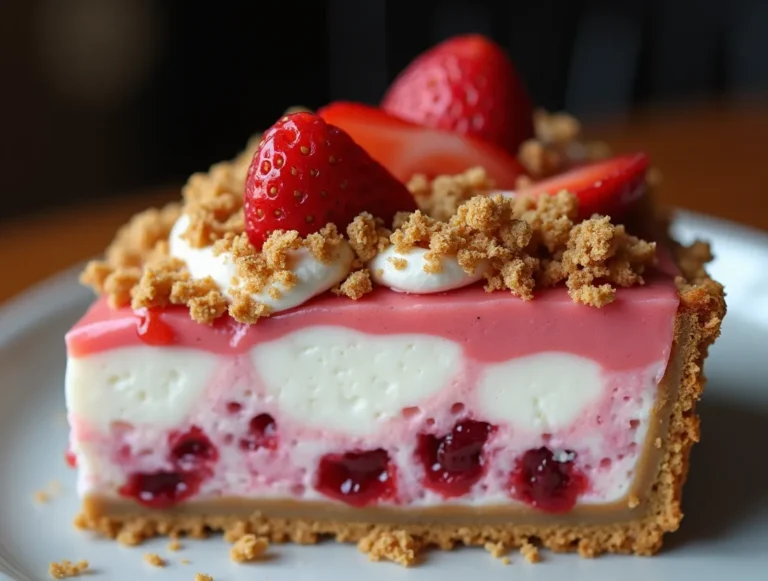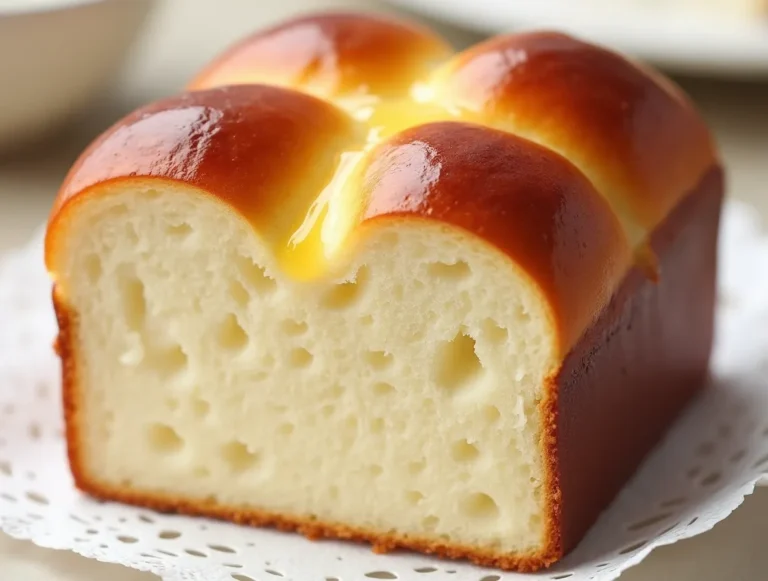German Chocolate Cake: 5 Pro Tips for Perfect Frosting
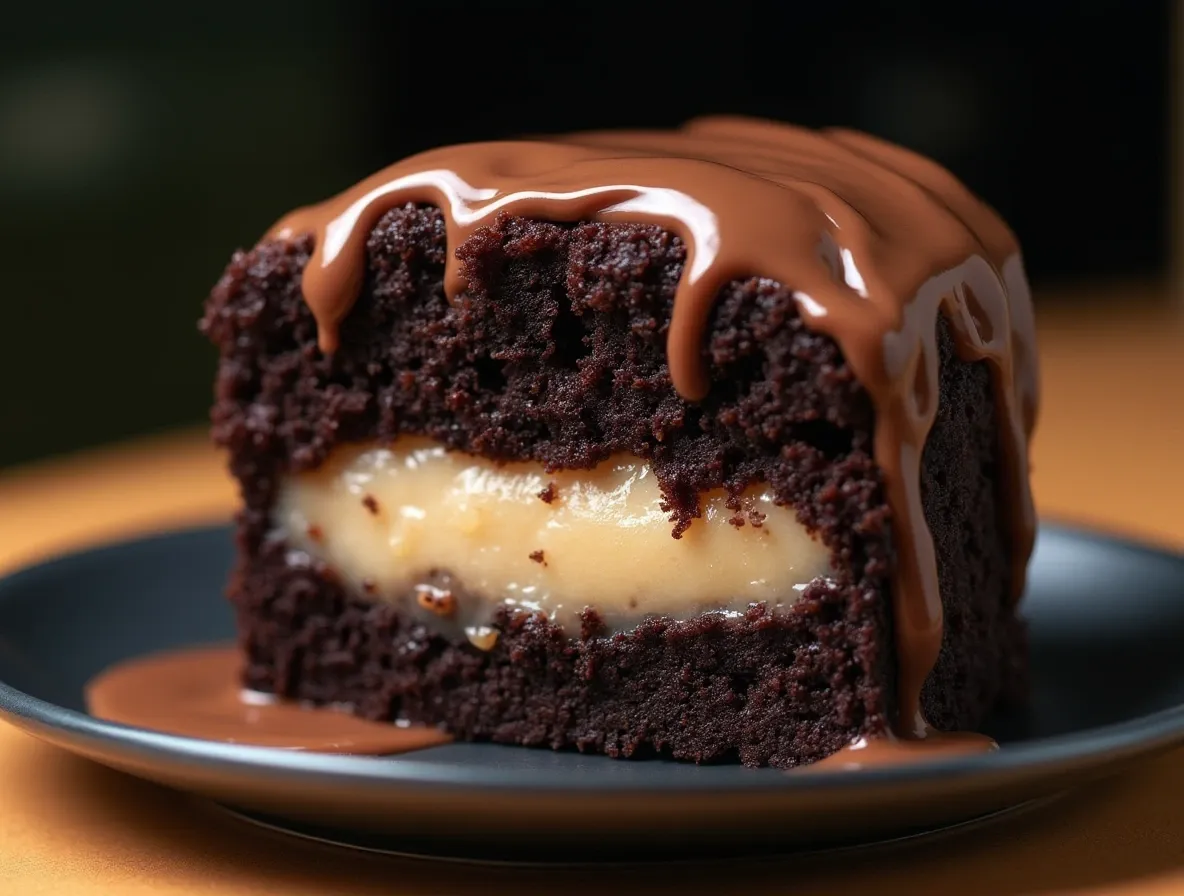
Table of Contents
Introduction: The Rich History Behind This Iconic Cake
There’s something undeniably special about slicing into a perfectly crafted German Chocolate Cake. As your knife glides through the three moist chocolate layers, revealing the luscious coconut-pecan frosting sandwiched between them, you know you’re about to experience something extraordinary. But here’s the surprising truth – despite its name, this cake isn’t actually German at all!
The story begins in 1852 when an American baker named Samuel German developed a type of dark baking chocolate for the Baker’s Chocolate Company. This chocolate, later named “German’s Sweet Chocolate,” sat quietly on shelves for over a century until 1957, when a Dallas homemaker named Mrs. George Clay submitted her chocolate cake recipe to a local newspaper. The recipe, which used German’s Sweet Chocolate, became an instant sensation, and the name “German Chocolate Cake” stuck – though it’s been confusing bakers ever since!
What makes this cake truly remarkable is its perfect balance of textures and flavors. The rich, tender chocolate cake provides the ideal canvas for the gooey, caramel-like frosting studded with toasted coconut and pecans. It’s a dessert that manages to be indulgent without being overwhelming, sophisticated yet comforting, and impressive while remaining surprisingly simple to make.
Why This Recipe Will Become Your Go-To Celebration Cake
1. The Perfect Chocolate Base
Our version features a super-moist chocolate cake that’s light yet rich, thanks to a combination of cocoa powder and boiling water. The hot water helps “bloom” the cocoa, intensifying its flavor while ensuring an incredibly tender crumb. Unlike dry, dense chocolate cakes that leave you reaching for milk, this one stays perfectly moist for days.
2. The Signature Frosting That Steals the Show
The coconut-pecan frosting is what truly sets German Chocolate Cake apart. Imagine a caramel-adjacent custard loaded with toasty coconut flakes and crunchy pecans. It’s sweet but not cloying, with deep, complex flavors that develop as it sits. We’ll share professional tips for getting the perfect consistency every time.
3. Make-Ahead Magic
Unlike many fussy layer cakes that must be served immediately, this cake actually improves with time. The flavors meld beautifully overnight, making it the perfect stress-free dessert for entertaining. We’ll show you exactly how to store it for optimal freshness.
The Science Behind the Perfect German Chocolate Cake
Before we dive into the recipe, let’s understand what makes this formula work so well:
Flour Power
We use all-purpose flour for the ideal structure. The protein content gives enough support for the layers while keeping them tender. For a gluten-free version, substitute with a 1:1 gluten-free flour blend (learn more about gluten-free diets).
Cocoa Chemistry
The combination of Dutch-process cocoa powder (alkalized) and baking soda creates the perfect rise. The boiling water helps dissolve the cocoa particles completely, eliminating any bitterness while enhancing chocolate flavor.
Sugar’s Multiple Roles
Granulated sugar does more than sweeten – it helps tenderize the crumb, promotes browning, and in the frosting, combines with egg yolks to create that luscious, pudding-like texture.
Ingredients Breakdown (Why Each One Matters)
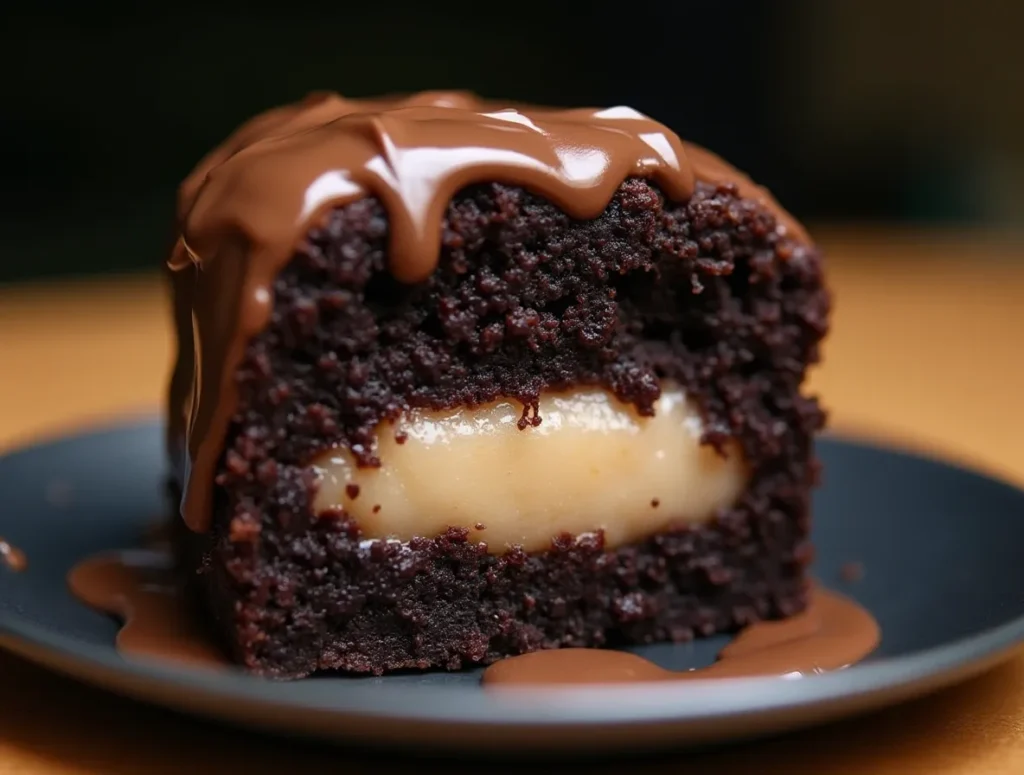
For the Cake:
- 2 cups (250g) all-purpose flour: The foundation. Spoon and level to measure correctly.
- ¾ cup (75g) unsweetened cocoa powder: Use natural cocoa for that classic taste.
- 2 cups (400g) granulated sugar: Fine sugar dissolves better in the batter.
- 1½ tsp baking powder + 1½ tsp baking soda: The perfect leavening combo.
- 1 tsp salt: Balances all the sweetness.
- 1 cup (240ml) buttermilk: The acid tenderizes the gluten and reacts with baking soda.
- ½ cup (120ml) vegetable oil: Keeps the cake moist longer than butter would.
- 2 large eggs: Provide structure and richness.
- 2 tsp vanilla extract: Enhances all the other flavors.
- 1 cup (240ml) boiling water: The secret to an ultra-moist crumb.
For the Coconut-Pecan Frosting:
- 1 cup (200g) granulated sugar: Caramelizes to create the base flavor.
- 1 cup (240ml) evaporated milk: Concentrated milkiness without adding water.
- 3 large egg yolks: Thickens the frosting to perfection.
- ½ cup (115g) unsalted butter: Adds richness and sheen.
- 1 tsp vanilla extract: Rounds out the flavors.
- 1½ cups (130g) sweetened shredded coconut: Toast it for maximum flavor.
- 1 cup (120g) chopped pecans: Toast these too for nutty depth.
Step-by-Step Masterclass: Baking the Perfect Layers
1. Preparing Your Pans Like a Pro
- Preheat oven to 350°F (175°C).
- Grease three 9-inch round pans with butter or baking spray.
- Line bottoms with parchment rounds for guaranteed easy release.
- Dust sides with cocoa powder (instead of flour) to prevent white streaks.
2. Mixing the Batter (The Right Way)
- In a large bowl, whisk together all dry ingredients (flour through salt).
- Add buttermilk, oil, eggs, and vanilla. Mix with an electric mixer on medium for 2 minutes.
- Reduce speed to low and gradually add boiling water. The batter will be thin – this is normal!
Pro Tip: For extra chocolate intensity, replace ¼ cup of the water with freshly brewed coffee.
3. Baking for Perfect Texture
- Divide batter evenly (about 2 cups per pan).
- Bake for 25-30 minutes until centers spring back when lightly pressed.
- Cool in pans for 10 minutes, then invert onto wire racks.
- Peel off parchment and cool completely before frosting.
Crafting the Iconic Frosting: A Step-by-Step Guide
1. The Cooking Process
- In a heavy-bottomed saucepan, combine sugar, evaporated milk, egg yolks, and butter.
- Cook over medium heat, stirring constantly with a heatproof spatula.
- After about 8 minutes, the mixture will begin to thicken noticeably.
- Continue cooking until it reaches 170°F (77°C) on a thermometer, or until it coats the back of a spoon.
2. Finishing Touches
- Remove from heat and stir in vanilla.
- Fold in toasted coconut and pecans (see toasting instructions below).
- Let cool to spreading consistency (about 1 hour), stirring occasionally.
Toasting How-To: Spread coconut and pecans on a baking sheet. Toast at 350°F for 5-7 minutes until fragrant and lightly golden. Watch closely to prevent burning!
Advanced Assembly Techniques
1. Leveling Your Layers
- Use a serrated knife to level any domed cake tops.
- Save the scraps for an incredible cake trifle or ice cream topping.
2. Frosting Distribution
- Place first layer on a cake board or serving plate.
- Spread ¾ cup frosting evenly to edges.
- Repeat with second layer.
- Top with final layer and frost only the top, allowing the sides to show the beautiful layers.
Chef’s Secret: For extra decadence, pipe a chocolate ganache border around the top edge before adding the final frosting layer.
Professional Decorating Ideas
Classic Presentation
- Leave sides unfrosted to showcase the layers
- Garnish with whole pecans and coconut flakes around the top edge
- Dust lightly with cocoa powder for contrast
Modern Twists
- Frost entire cake with chocolate Swiss meringue buttercream
- Create a drip effect with warm ganache
- Add edible gold leaf for special occasions
Serving Suggestions: Beyond the Slice
Beverage Pairings
- Cold milk: The classic companion
- Espresso: Cuts through the richness
- Dessert wines: Try a tawny port or cream sherry
Accompaniments
- Vanilla bean ice cream: Hot/cold contrast
- Whipped cream: Lightens each bite
- Fresh raspberries: Tart counterpoint
Storage and Make-Ahead Strategies
Room Temperature
- Keeps well covered for 2 days
- Ideal for serving at its most tender
Refrigeration
- Store in an airtight container for up to 5 days
- Bring to room temperature before serving
Freezing Options
- Unfrosted layers: Wrap tightly in plastic, then foil. Freeze for 3 months
- Whole frosted cake: Freeze uncovered until firm, then wrap. Thaw overnight in fridge
Troubleshooting Common Issues
Problem: Dry Cake
Solutions:
- Check oven temperature with a thermometer
- Reduce baking time by 3-5 minutes
- Add 2 tbsp extra oil to the batter
Problem: Frosting Too Runny
Solutions:
- Cook 2-3 minutes longer until thicker
- Chill for 15 minutes before spreading
- Add ¼ cup extra toasted coconut to absorb moisture
Problem: Cake Sticking to Pans
Solutions:
- Always use parchment rounds
- Grease pans thoroughly, including corners
- Let cool 10 minutes before removing
Health-Conscious Adaptations
Lower Sugar Version
- Reduce cake sugar to 1½ cups (300g)
- Substitute monk fruit sweetener in the frosting
- Use unsweetened coconut
Vegan Variation
- Replace eggs with flax eggs (2 tbsp ground flax + 5 tbsp water)
- Use coconut oil instead of butter
- Substitute coconut milk for evaporated milk
For those exploring dietary options, consider a low-fat diet version by reducing the frosting butter to ¼ cup.
The Ultimate German Chocolate Cake Experience
This cake represents more than just dessert – it’s a celebration of textures and flavors that have stood the test of time. From its accidental origins to its current status as a beloved American classic, every element has been perfected through generations of bakers.
When you serve this cake, you’re not just offering something sweet – you’re presenting a piece of culinary history, a labor of love, and a masterclass in balanced flavors. The moist chocolate layers, the gooey coconut-pecan frosting, the satisfying crunch – it all comes together in what might just be the perfect celebration cake.
For more inspiring dessert ideas, visit our desserts category. Whether you’re a baking novice or a seasoned pro, this German Chocolate Cake recipe promises spectacular results every time. So preheat that oven, toast those pecans, and get ready to create something truly memorable!
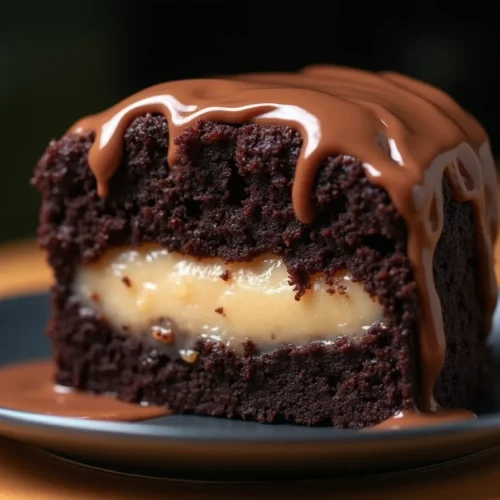
German Chocolate Cake: The Best Moist & Decadent Recipe
Ingredients
For the Cake:
- 2 cups 250g all-purpose flour
- ¾ cup 75g unsweetened cocoa powder
- 2 cups 400g granulated sugar
- 1½ tsp baking powder
- 1½ tsp baking soda
- 1 tsp salt
- 1 cup 240ml buttermilk, room temperature
- ½ cup 120ml vegetable oil
- 2 large eggs room temperature
- 2 tsp vanilla extract
- 1 cup 240ml boiling water
For the Coconut-Pecan Frosting:
- 1 cup 200g granulated sugar
- 1 cup 240ml evaporated milk
- 3 large egg yolks
- ½ cup 115g unsalted butter, cubed
- 1 tsp vanilla extract
- 1½ cups 130g sweetened shredded coconut
- 1 cup 120g chopped pecans
Instructions
Preheat & Prep Pans:
- Preheat oven to 350°F (175°C).
- Grease and flour three 9-inch (23cm) round cake pans or line with parchment.
Make the Cake Batter:
- In a large bowl, whisk together flour, cocoa, sugar, baking powder, baking soda, and salt.
- Add buttermilk, oil, eggs, and vanilla. Beat with a mixer until smooth.
- Gradually stir in boiling water (batter will be thin).
Bake the Layers:
- Divide batter evenly into pans.
- Bake 25–30 minutes until a toothpick comes out clean.
- Cool in pans 10 minutes, then transfer to wire racks.
Prepare the Frosting:
- In a saucepan, combine sugar, evaporated milk, egg yolks, and butter.
- Cook over medium heat, stirring constantly, until thickened (10–12 minutes).
- Remove from heat, stir in vanilla, coconut, and pecans. Cool to room temperature.
Assemble the Cake:
- Place one layer on a plate, spread frosting.
- Repeat with second layer, then top with the third.
- Frost only the top (or sides if desired).
Notes
- For best flavor, make the cake 1 day ahead.
- Toast coconut & pecans for extra nuttiness (350°F for 5–7 minutes).
- Storage: Keep covered at room temp for 2 days or refrigerate for 5 days.

